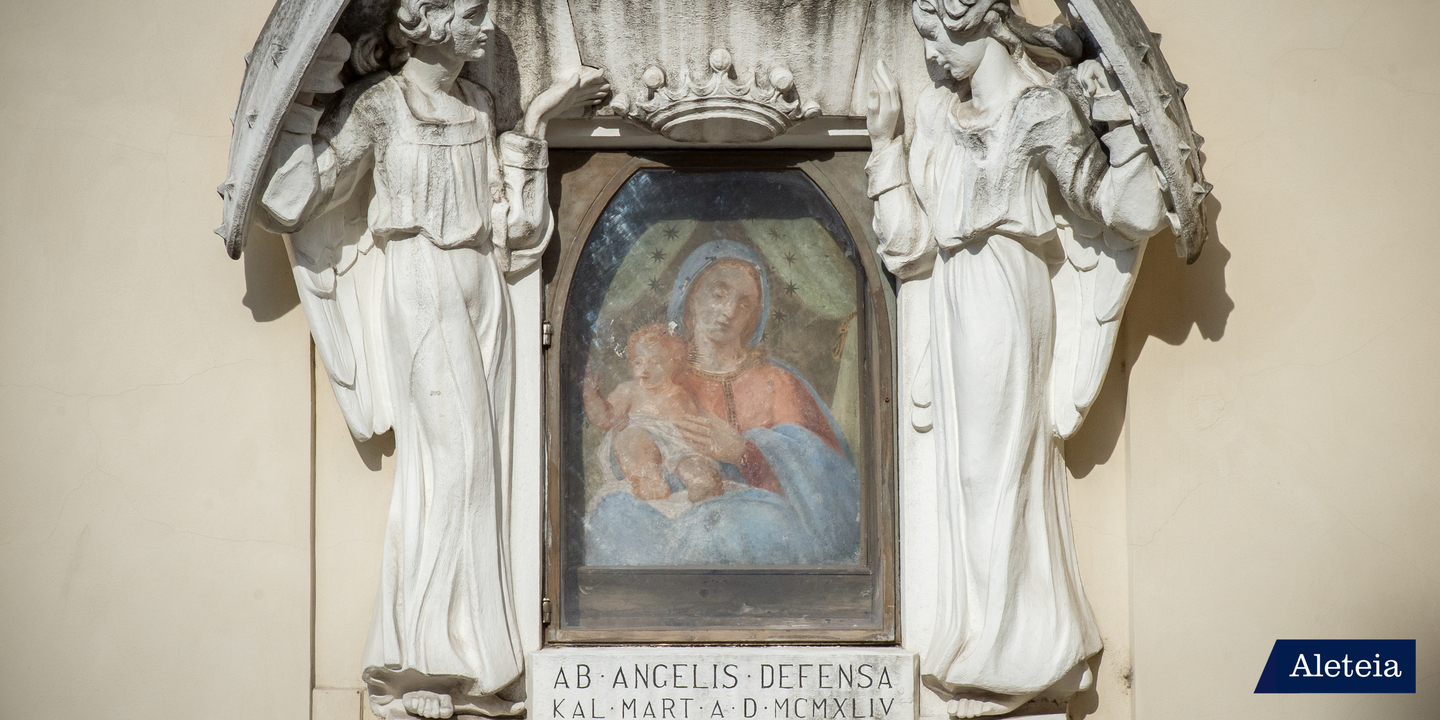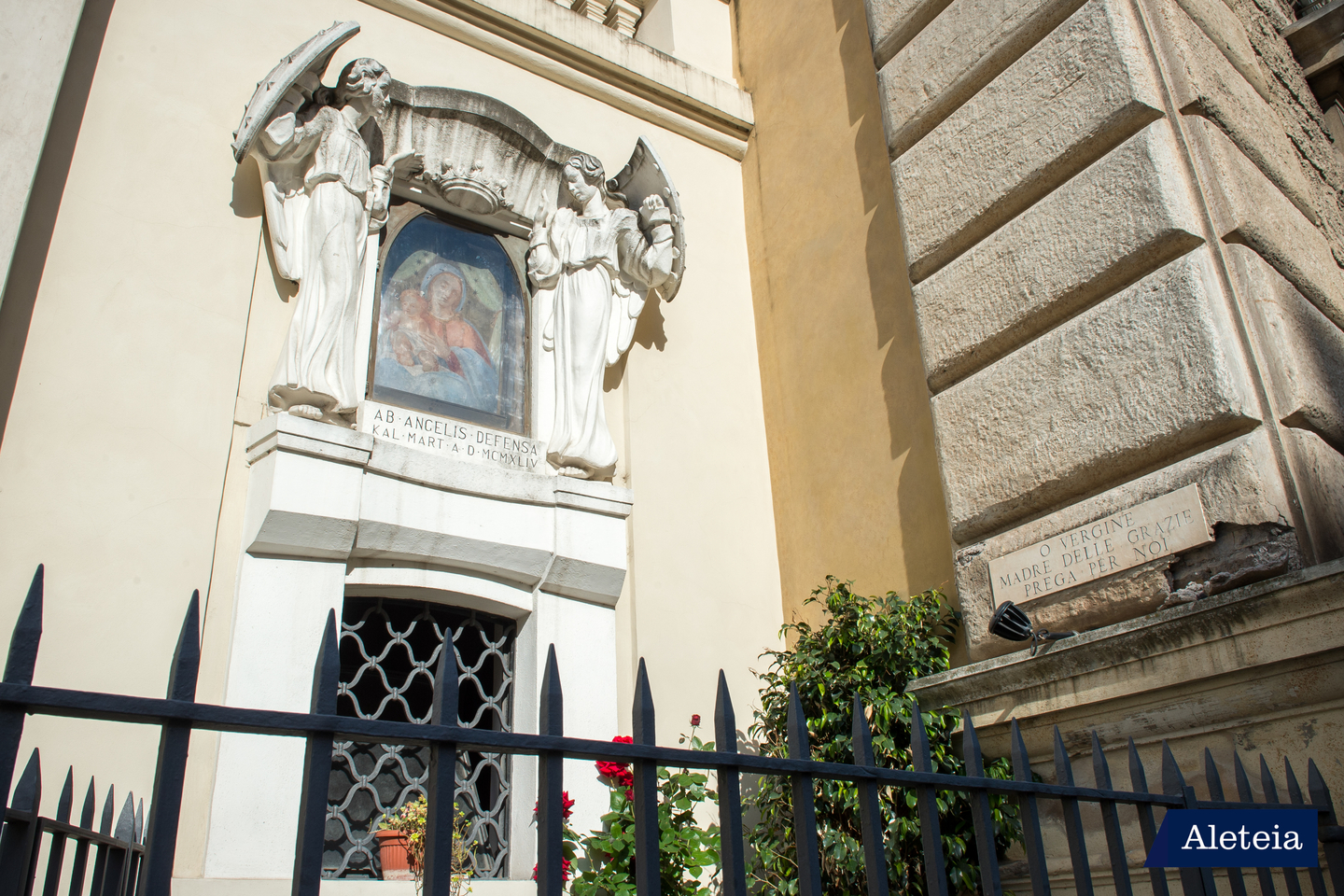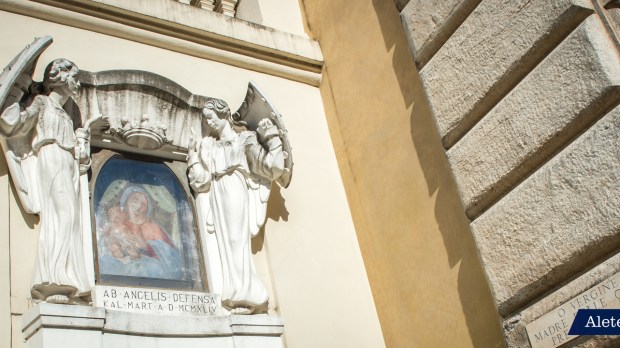Lenten Campaign 2025
This content is free of charge, as are all our articles.
Support us with a donation that is tax-deductible and enable us to continue to reach millions of readers.
We continue with our daily tour this month through a particular artistic expression of Marian devotion: Rome’s “Madonnelle” (“little Madonnas”). These are images of Mary—some of them miraculous—scattered throughout the streets and alleyways of the city. They are the object of much popular devotion.
“Madonna of the Bombs” at Piazza del Sant’uffizio (Holy Office Square)

The “Madonna of the Bombs” owes her sobriquet to the fact that the image was left miraculously undamaged during the March 1, 1944, bombardment of the buildings facing the Square of the Holy Office.
That night, at around 8 p.m., as J. S. Grioni recounts: “Powerful explosions from six bombs dropped from an airplane struck the buildings around the square. Shards of debris struck the palace, piercing through walls into the apartments and shattering nearly all the windows, except the glass protecting Our Lady of Grace, which remained inexplicably intact at the center of a dense circle of damage from flying shrapnel, clearly visible around the image.”

The painting is a fresco in the style of the 18th and 19th centuries, venerated as “Our Lady of Grace,” depicting the Madonna with the Child Jesus. The image is also known as the “Madonna of the Bombs” due to the episode just recounted.
The image is found between the palace of the Holy Office and the entrance to the Pontifical Oratory of St. Peter, on a stretch of wall enclosed in a small garden. After the events of the war, and after the miraculous event, the Oratory of St. Peter commissioned the image to be surrounded by the new marble frame with two large angels on either side protecting it, bearing studded shields.
There is an inscription below, which reads: “Ab angelis defensa – Kal. Mart. A. D. MCMXLIV” (“Defended by angels, March 1, 1944”).
~
Follow the series here: Little Madonnas of Rome
See more articles like this at Aleteia’s Art & Travel section.

